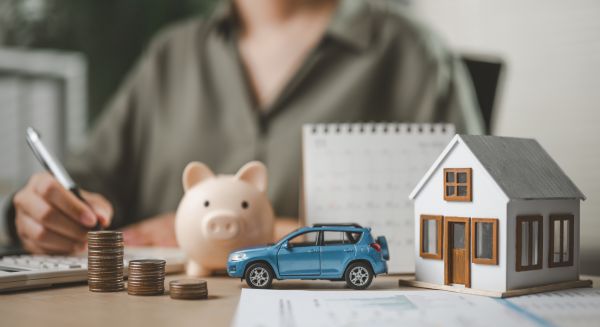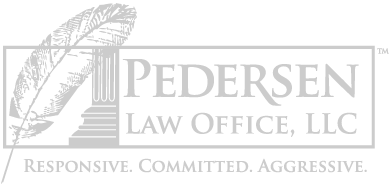Chapter 13 Repayment Plan Explained
Jun 27, 2025
 Chapter 13 bankruptcy can be a powerful debt relief option for those looking to stop foreclosure, avoid vehicle repossession, or protect valuable assets. It is also often used when your income is too high to qualify for Chapter 7, but you still need a structured plan to catch up and eliminate debt. Several important factors influence how your Chapter 13 plan payment is calculated. Understanding these can help you determine whether Chapter 13 is the right debt relief solution for your situation. Let’s review the key factors that determine your Chapter 13 plan payment amount.
Chapter 13 bankruptcy can be a powerful debt relief option for those looking to stop foreclosure, avoid vehicle repossession, or protect valuable assets. It is also often used when your income is too high to qualify for Chapter 7, but you still need a structured plan to catch up and eliminate debt. Several important factors influence how your Chapter 13 plan payment is calculated. Understanding these can help you determine whether Chapter 13 is the right debt relief solution for your situation. Let’s review the key factors that determine your Chapter 13 plan payment amount.
CHAPTER 13 PLAN
Your chapter 13 plan filed within your bankruptcy outlines how you will pay back your creditors based on the types of debts you have, the assets you own and your income. Payments will be made to the Bankruptcy Trustee who will distribute payment to your creditors based on your plan. There are several factors that determine your chapter 13 bankruptcy plan payment amount.
Length of Chapter 13 Plan
Chapter 13 Plans can be between 36 months and 60 months. The length of your plan mainly depends on whether your income is above or below your state’s median income for your household size. Your state’s average income is determined by the U.S. Census Bureau. Your household income will be compared to your state’s median income using the bankruptcy means test.
If your income is below the median, you can qualify for a 36-month plan. However, you may choose a longer term to lower your payment amount. If your income is above the median, you are required to have a 60-month plan unless you repay all your creditors 100%.
Disposable Income
Disposable income is the money left after covering essential expenses like housing, food, and transportation. Your disposable income plays a large role in your Chapter 13 plan payment, and it determines how much you can pay toward your unsecured debts like medical bills and credit cards. However, the IRS does set some standards for allowable expenses to ensure they are reasonable. Regardless, it is important to show that your income covers both your Chapter 13 plan payment and your necessary expenses.
Priority Debts
Priority debts are obligations given special status under the bankruptcy code and are typically debts owed to or enforced by the government. Common examples include income taxes, property taxes, past-due child support and overpayment of government benefits. All priority debts must be paid in full through your Chapter 13 plan, so a large amount of priority debts can increase your Chapter 13 plan payment. However, a Chapter 13 plan often provides a more manageable repayment plan than facing these debts outside of bankruptcy.
Secured Debts
Secure debts are loans attached to collateral, such as a home or vehicle. During your Chapter 13 bankruptcy you must stay current on your payments to keep the asset. Any past-due amounts can be included in your Chapter 13 plan, helping prevent foreclosure or repossession. All arrearages on secured debts must be paid in full through your plan, which can have an impact on your Chapter 13 plan payment. However, a Chapter 13 may also reduce interest or even lower the total amount owed, depending on the terms of your loan. For more details, check out our blog, “Secured Debts in a Chapter 13.”
Non-Exempt Property
The bankruptcy court allows you to protect your assets using exemptions. If some assets cannot be fully exempted, they are considered non-exempt property. Unlike a Chapter 7 bankruptcy, where non-exempt assets may be sold, Chapter 13 bankruptcy allows you to keep them. However, your Chapter 13 plan must pay the same amount towards your unsecured creditors as the value of your non-exempt property. This may increase your plan payment, but it allows you to keep assets that you may otherwise lose.
Unsecured Debts
Unsecured debts are financial obligations not backed by collateral, such as credit cards, medical bills, and personal loans. In Chapter 13 bankruptcy, you are not required to pay these debts in full. Often unsecured debts receive little to no payment and the remaining balance is discharged at the end of your Chapter 13 case. The amount you will pay towards your unsecured debts is determined by your disposable income and the amount of unexempted property you own. This allows you to reorganize your debts into manageable payments, while reducing or even wiping out what you owe on unsecured debts.
FREE CONSULTATIONS
Chapter 13 bankruptcy can provide much needed relief from overwhelming debt, but determining your plan payment involves several key factors. Consulting an experienced bankruptcy attorney can help you evaluate your situation, calculate your payment accurately, and help you make an informed decision. At Pedersen Law Office, LLC, we provide free consultations to help you figure out the best debt relief option for your specific circumstances and help you through the entire process. Our law office serves the communities of Appleton, Neenah, Menasha, Oshkosh, Green Bay and their surrounding areas.
